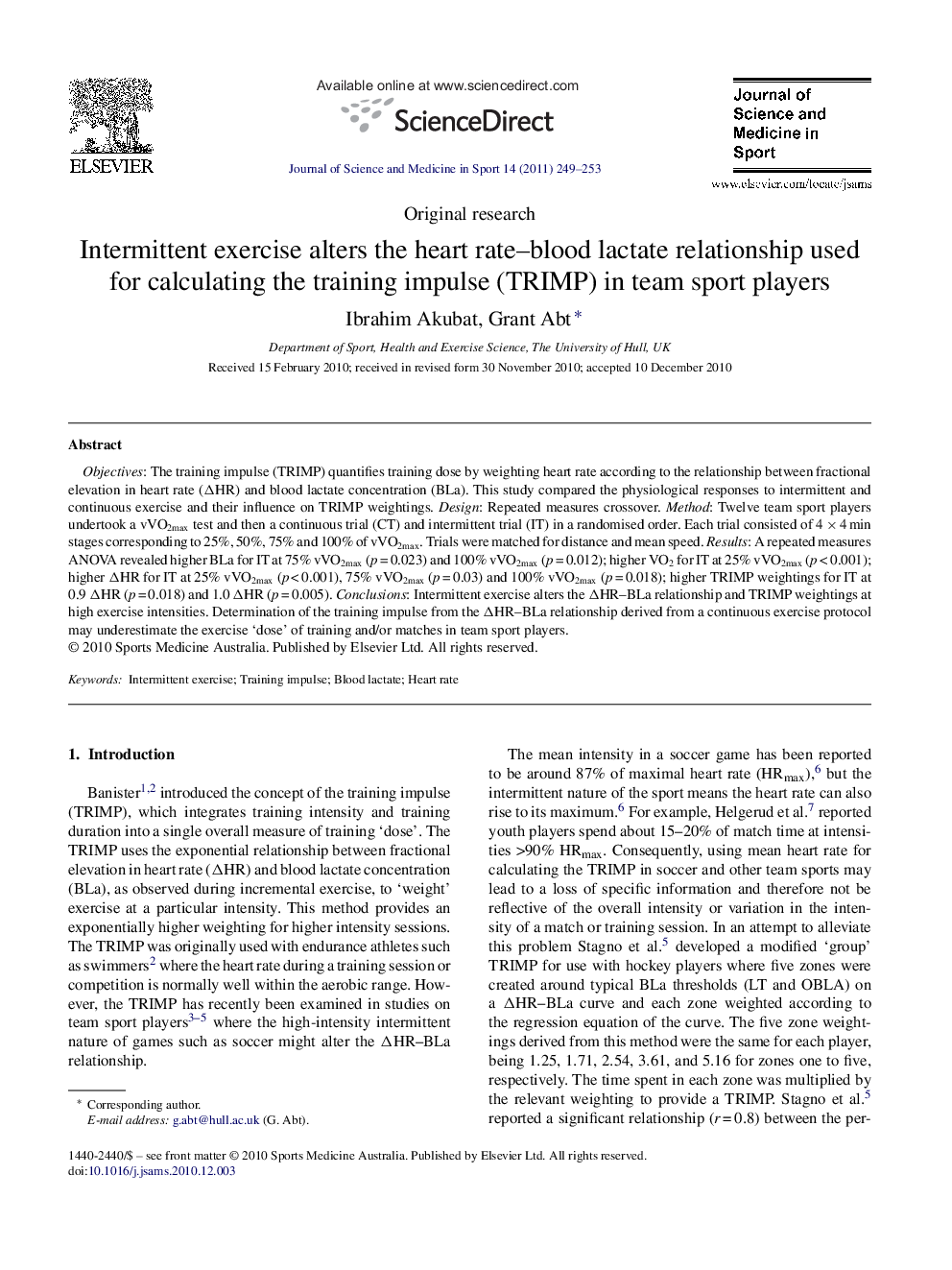| Article ID | Journal | Published Year | Pages | File Type |
|---|---|---|---|---|
| 2703153 | Journal of Science and Medicine in Sport | 2011 | 5 Pages |
Objectives: The training impulse (TRIMP) quantifies training dose by weighting heart rate according to the relationship between fractional elevation in heart rate (ΔHR) and blood lactate concentration (BLa). This study compared the physiological responses to intermittent and continuous exercise and their influence on TRIMP weightings. Design: Repeated measures crossover. Method: Twelve team sport players undertook a vVO2max test and then a continuous trial (CT) and intermittent trial (IT) in a randomised order. Each trial consisted of 4 × 4 min stages corresponding to 25%, 50%, 75% and 100% of vVO2max. Trials were matched for distance and mean speed. Results: A repeated measures ANOVA revealed higher BLa for IT at 75% vVO2max (p = 0.023) and 100% vVO2max (p = 0.012); higher VO2 for IT at 25% vVO2max (p < 0.001); higher ΔHR for IT at 25% vVO2max (p < 0.001), 75% vVO2max (p = 0.03) and 100% vVO2max (p = 0.018); higher TRIMP weightings for IT at 0.9 ΔHR (p = 0.018) and 1.0 ΔHR (p = 0.005). Conclusions: Intermittent exercise alters the ΔHR–BLa relationship and TRIMP weightings at high exercise intensities. Determination of the training impulse from the ΔHR–BLa relationship derived from a continuous exercise protocol may underestimate the exercise ‘dose’ of training and/or matches in team sport players.
